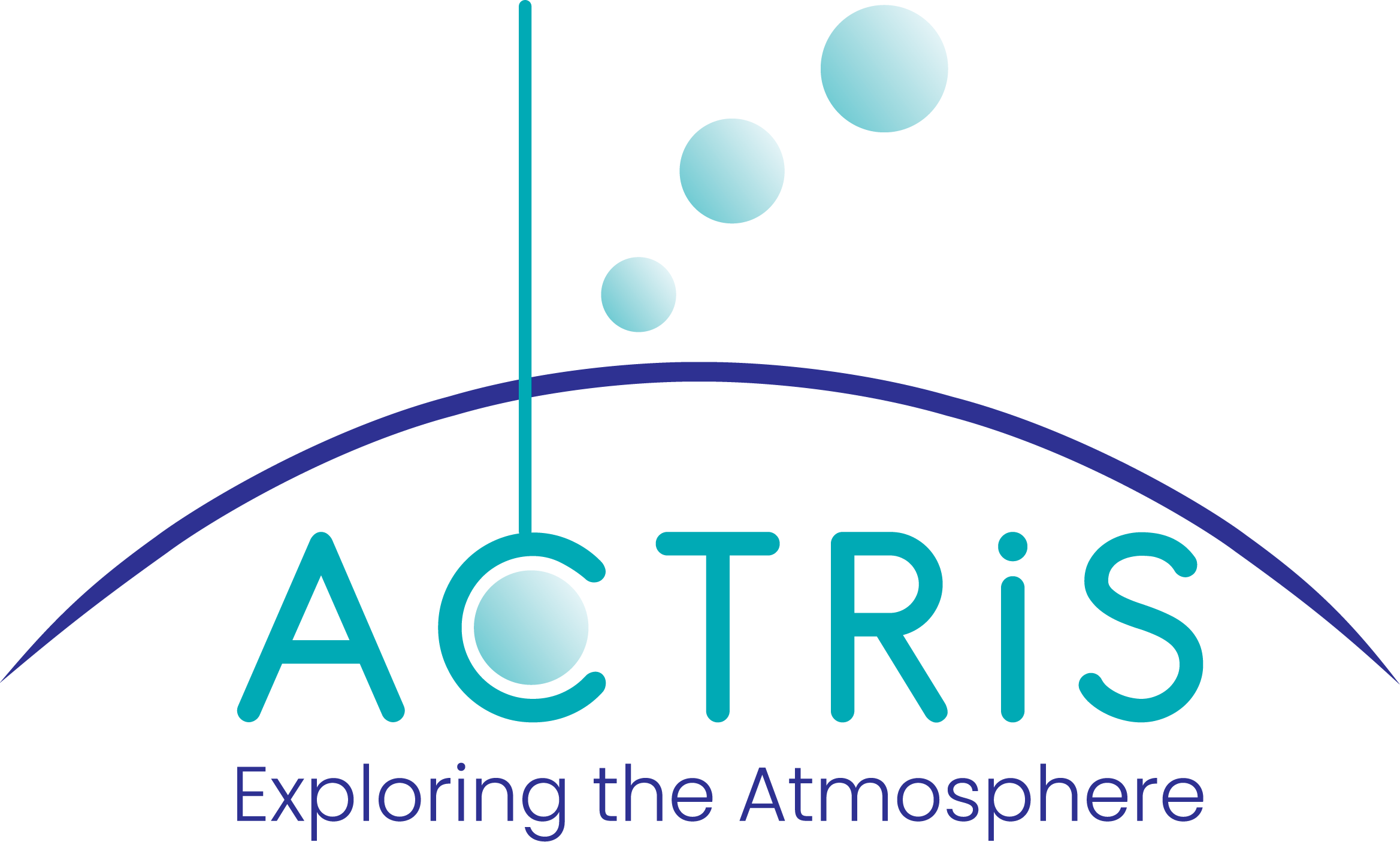ACTRIS
ACTRIS (Aerosols, Clouds, and Trace gases Research InfraStructure) is a European network for the observation of Aerosol, Clouds, and Trace gases. ACTRIS was initially funded through National and EC Research programmes (as FP7 and H2020), and after more than 10 years, it is now becoming a European Research Infrastructure Consortium (ERIC). At the moment, 22 countries have shown their commitment at the organizational or state level, and the overall ACTRIS community involves more than 100 research performing organizations.
ACTRIS is composed of observing stations, exploratory platforms, instrument calibration centres, and a data centre. ACTRIS serves a vast community working on models and forecast systems by offering high-quality data for atmospheric gases, clouds, and trace gases. The primary objective of ACTRIS is to provide the 4D-variability of clouds and of the physical, optical and chemical properties of short-lived atmospheric species, from the surface throughout the troposphere to the stratosphere, with the required level of precision, coherence and integration.
An essential step in the dust forecast is the model evaluation. This process consists of the comparison of the model results with the available observations on different temporal and spatial scales. It facilitates the understanding of the model’s capabilities, limitations, and appropriateness for the purpose for which it was developed. The first problem for the evaluation of dust models is the scarcity of routine observations intended for dust monitoring. Column-integrated dust load from sun-photometric measurements and satellite retrievals are routinely used for near-real-time evaluation. Ground- and satellite-borne lidar, and last-generation ceilometers are the only tools capable of inquiring about the vertical profiles of aerosol-related variables. Therefore, the information provided by them may potentially be used to evaluate the vertical component of the dust fields. Some work has already been done in this direction, as in Binietoglou et al. (2015), where dust concentration forecast by different numerical models is compared with lidar retrievals of dust mass vertical profiles. However, there are limitations in the retrieval of mass vertical profiles, and it has now been opted to establish a routine comparison of extinction vertical profiles. Ongoing research for the implementation of operational evaluation of dust vertical distribution is being considered as part of the activities of the Barcelona Dust Regional Center.

